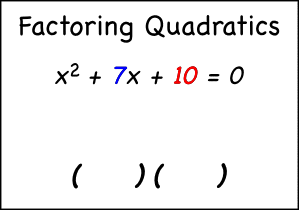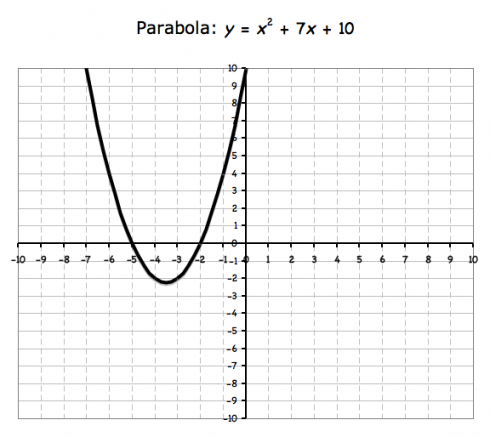Solving quadratic equations requires finding the factors, which is not nearly as easy as multiplying out the factors to get the unfactored equation.
Instead, you have to do a bit of trial and error, to figure out which pairs of numbers multiply to give the constant in the equation and then add together to give the coefficient of the x term.

It gets easier with practice. Or you could use the quadratic formula, where if the equation were:
![]()
The solutions would be found with:
![]()
So in the equation used in the diagram:
![]()
you get:
- a = 1
- b = 7
- c = 10
Putting these values into the quadratic equation gives:
![]()
which simplifies to:
![]()
![]()
![]()
With the whole plus-or-minus thing (![]() ), this last equation gives two solutions:
), this last equation gives two solutions:
(1): ![]()
and,
(2): ![]()
Now, you may have noticed that the solutions are negative, but when the equation is factored in the illustration, the result is:
![]()
The difference is that, although we’ve factored the equation, we have not solved it. When I say solve the equation, I mean find the values of x that would result in the left hand side of the equation being equal to the right, which is zero. Since multiplying anything by zero will give you zero, and the two factors multiply each other, the left-hand-side of the equation will equal zero when either one of the two factors equals zero.
So:
(x + 5) = 0
x = – 5
and:
(x + 2) = 0
x = -2
Finally, we can plot the line:
![]()
using the Graphing Calculator Pro app, or this somewhat crude Parabola-Line Excel Graphing Worksheet, to show that the line crosses the x axis at -5 and -2.:
